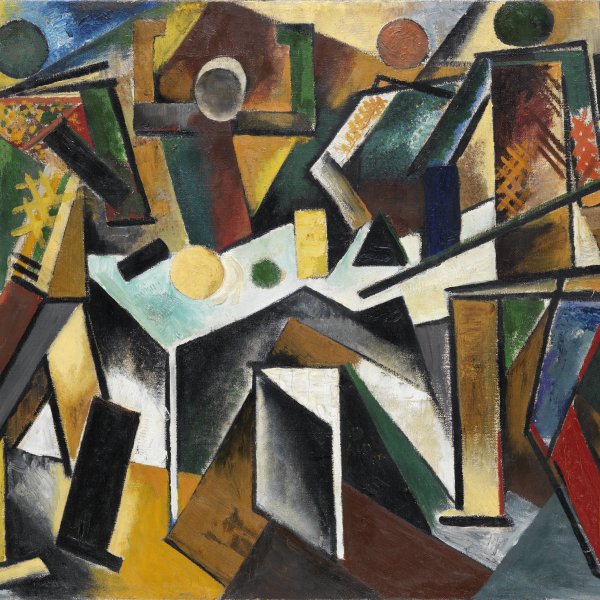Varvara Fedorovna Stepanova
Varvara Fedorovna Stepanova was born on 5 November 1894 in Kovno (today Kaunas) in Lithuania. Her artistic path began in 1910 at the Kazan School of Art where she met Alexander Rodchenko, a student of that same school, who became her life-long companion. Together with Rodchenko, the artist moved to Moscow in 1912 and continued her apprenticeship attending the Stroganov School and studying with Mikhail Leblan and Konstantin Yuon. Early in her career Stepanova admired the Futurist poets and autonomously developed what came to be known as non-objective visual poetry examplified by such works as Zigra Ar and Gaust Chaba. After the October Revolution Varvara Stepanova became progressively interested in art that would express the social by being accessible to the masses. She thus began to experiment with new languages that both revealed and served the multitude such as designs for clothing that were then reproduced on an industrial scale and commercialised through popular publications such as Zhurnal Levogo Fronta Iskusstv. During the 1920s her works epitomised the Russian avant-garde movement known as Constructivism, characterised by large scale canvases featuring statuesque figures. The paintings were executed according to geometric pictorial values that were intended to embody the positive spirit that pervaded the rise of the post-revolutionary Russian citizen. From 1920 until 1925 the artist taught at the Krupskaia Academy of Social Education and from 1922 she started collaborating with theatres, including the Theatre of the Revolution for which she created sets and costume designs for Meierhold's: The Death of Tarelkin (Smert' Tarelkina). Along with many avant-garde artists, Stepanova produced works in a variety of mediums ranging from traditional painting to decorative designs for public spaces. She also contributed to journals and together Rodchenko extensively experimented with photography. Varvara Stepanova died over on 20 May 1958.
Dominique Lora


